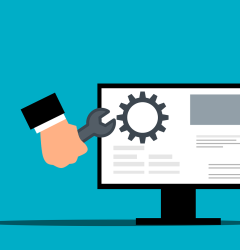You’re Already Paying for It, So Why Not Actually Use It?
24 Jul

Yesterday I spent two hours with a client in the finance space, walking them through Microsoft Teams. They’ve been paying for it for years. And like many businesses, they had no idea what it could actually do.
They knew it was there, and they used it, kind of.
Chatting with teammates, maybe a call here or there. But the moment we unpacked things like shared channels, approvals, @mentions, tabs, and even just proper file sharing, they quickly saw how much simpler and more effective their daily work could’ve been.
And this happens. All. The. Time.
The Real Problem Isn’t the Tech
Most companies I’ve worked with don’t usually have a tech problem. They have a usage problem. You’re already paying for powerful tools like Microsoft 365. The cost is done. But your team isn’t getting the value out of it, usually because they’ve never been shown why it matters, or how it actually fits into their day-to-day work.
Training sessions often get a bad rap. People picture boring PowerPoints, someone droning on about buttons you’ll never press. But that’s not what good training is.
At least, not the way we do it.
Why Before How
What I’ve found works best is starting with the why. (As Simon Sinek put it in his book Start With Why: People don’t buy what you do. They buy why you do it.)
- Why should your finance team care about Teams?
- Why does using shared documents instead of emailing spreadsheets make a difference?
- Why do chat threads beat reply-all email chains?
Once people see the bigger picture (improved workflows, less admin, better collaboration), the how suddenly makes sense. Because now it’s relevant. It solves a real pain.
And this doesn’t just apply to Teams. This goes for SharePoint, OneDrive, Planner, Loop, you name it. Most businesses are sitting on a goldmine of tools they don’t even realise they own, and the only thing stopping them from using them properly is a bit of guidance.
Tech Is a Tool. It Only Works If You Use It Right.
If your team’s never had proper training (and I mean real-world, “show me how this makes my job easier” training), don’t be surprised when they fall back on old habits.
It’s not that your team isn’t capable, it’s just that they haven’t been given the right support to use the tools properly.
You’ve got the tools. They’ve got the potential. It’s just about connecting the two.



Recent Comments